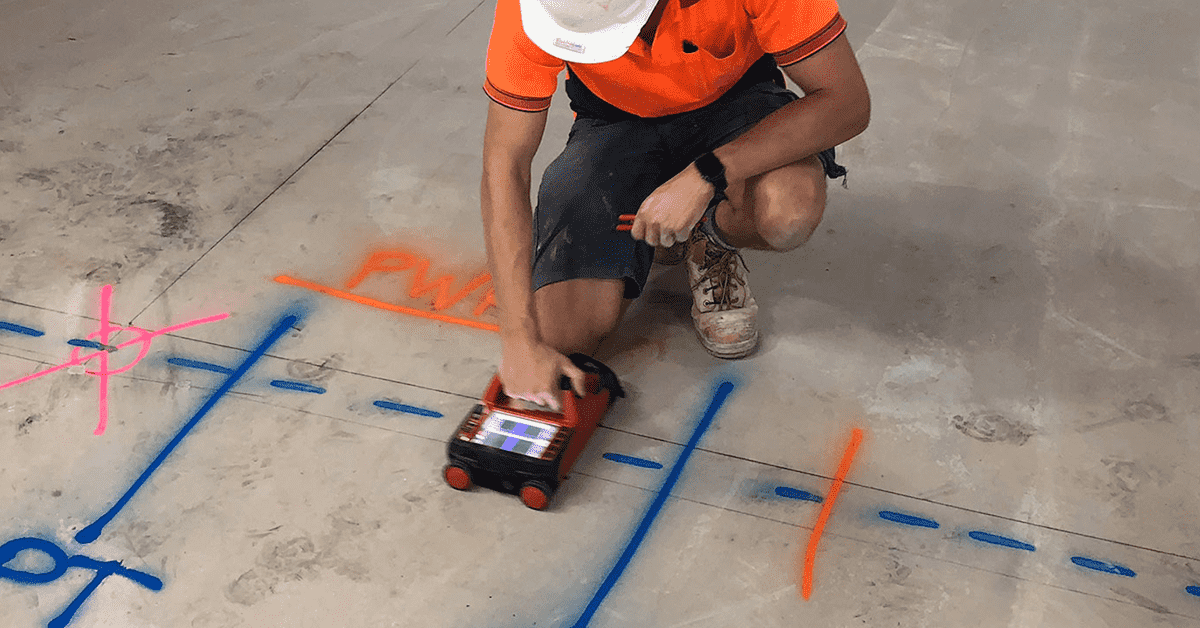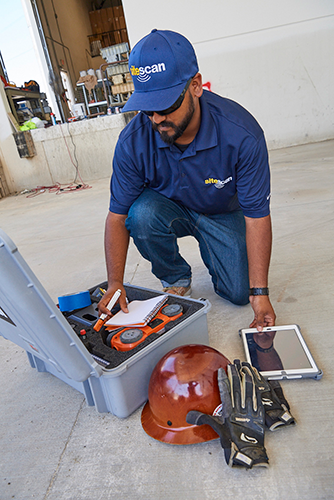Past the Surface Area: Leveraging Advanced Concrete Scanning Techniques for Unmatched Accuracy and Insight
Advanced concrete scanning techniques have actually arised as vital devices in this quest, supplying a peek underneath the surface to reveal a globe of critical insights. By using cutting-edge modern technologies, experts can reveal anomalies, analyze the problem of concrete structures, and make informed decisions that form the training course of tasks.
Significance of Advanced Concrete Scanning
The relevance of making use of advanced concrete scanning techniques depends on the exceptional accuracy they supply for spotting sub-surface anomalies and making certain architectural stability. By using cutting-edge innovations such as ground-penetrating radar (GPR), electromagnetic induction, and advanced sonar imaging, building and construction specialists can dig below the surface of concrete structures with a level of accuracy that much surpasses standard inspection methods. Concrete Scanning. These strategies enable the recognition of hidden risks like rebar corrosion, voids, conduits, or post-tension cables that can endanger the security and safety and security of a framework with time
In addition, progressed concrete scanning supplies vital understandings right into the general condition of a concrete element without the need for intrusive procedures, lessening the danger of triggering damage throughout the evaluation process. The ability to determine the exact area and depth of potential issues permits targeted repair services and maintenance, ultimately prolonging the life-span of the structure and optimizing its efficiency. Basically, the importance of advanced concrete scanning can not be overemphasized in the realm of construction and framework maintenance, where accuracy and dependability are extremely important.
Sorts Of Cutting-Edge Technologies

Abnormalities and Flaw Detection

In addition to GPR, concrete scanning strategies like thermography and impact-echo screening are likewise effective in spotting anomalies and issues. By leveraging these innovative methods, experts can proactively address architectural problems, guaranteeing the durability and security of concrete frameworks.
Assessing Concrete Problem
Exactly how can engineers precisely evaluate the condition of concrete frameworks to guarantee their longevity and security? Different innovative concrete scanning techniques are utilized for this objective. Ground-penetrating radar (GPR) is frequently made use of to evaluate the interior framework of concrete, spotting spaces, splits, and various other anomalies that may endanger its toughness.
Furthermore, aesthetic evaluation stays an essential component of concrete problem analysis. Engineers visually analyze the surface area for indications of damage, such as spalling, fracturing, or discoloration. Incorporating non-destructive screening approaches with aesthetic examinations enables a detailed evaluation of concrete condition, enabling engineers to identify possible concerns find here early on and implement timely upkeep or fixings. By leveraging these innovative strategies, engineers can ensure the long-term sturdiness and security of concrete structures.
Enhancing Decision-Making Procedures
In the realm of facilities administration, optimizing decision-making processes is vital for guaranteeing the reliable maintenance and longevity of concrete structures. Boosted decision-making processes in concrete monitoring include using advanced scanning methods to gather detailed information on the condition of structures. By leveraging innovations such as ground-penetrating radar and 3D imaging, stakeholders can make educated decisions concerning reinforcement, repair work, or replacement methods.
These advanced scanning techniques supply important Get More Information understandings into the inner structure of concrete, determining possible problems such as voids, cracks, or corrosion that may not show up externally. This level of detailed info permits positive upkeep planning, reducing the risk of structural failures and raising the overall life expectancy of concrete frameworks.
Additionally, by including electronic documents and evaluation tools right into the decision-making process, stakeholders can track the evolution of concrete conditions over time, allowing predictive upkeep strategies and enhancing source allocation. Inevitably, the combination of sophisticated concrete scanning techniques boosts decision-making processes by providing unrivaled accuracy, insight, and performance in infrastructure management.
Final Thought
In final thought, advanced concrete scanning strategies provide unrivaled accuracy and understanding in detecting anomalies, issues, and analyzing the problem of concrete structures. By leveraging sophisticated innovations, decision-making procedures can be boosted, bring about even more enlightened and reliable remedies for keeping and repairing concrete infrastructure. These strategies play a crucial role in making sure the security and longevity of concrete frameworks, making them an important tool in the field of building and design.
Moreover, advanced concrete scanning gives important understandings into the general condition of a concrete component without the need for invasive steps, lessening the danger of causing damage during the analysis process - Concrete Scanning. An additional innovative modern technology is 3D X-ray scanning, which supplies in-depth photos of the inner framework of concrete, using beneficial information without the need for damaging testing. Furthermore, Concrete Cover Meters are made use of to measure the density of concrete cover over reinforcement bars accurately. Improved decision-making web processes in concrete management involve making use of advanced scanning strategies to collect thorough data on the problem of structures.In final thought, advanced concrete scanning techniques provide exceptional precision and understanding in spotting abnormalities, defects, and assessing the problem of concrete structures